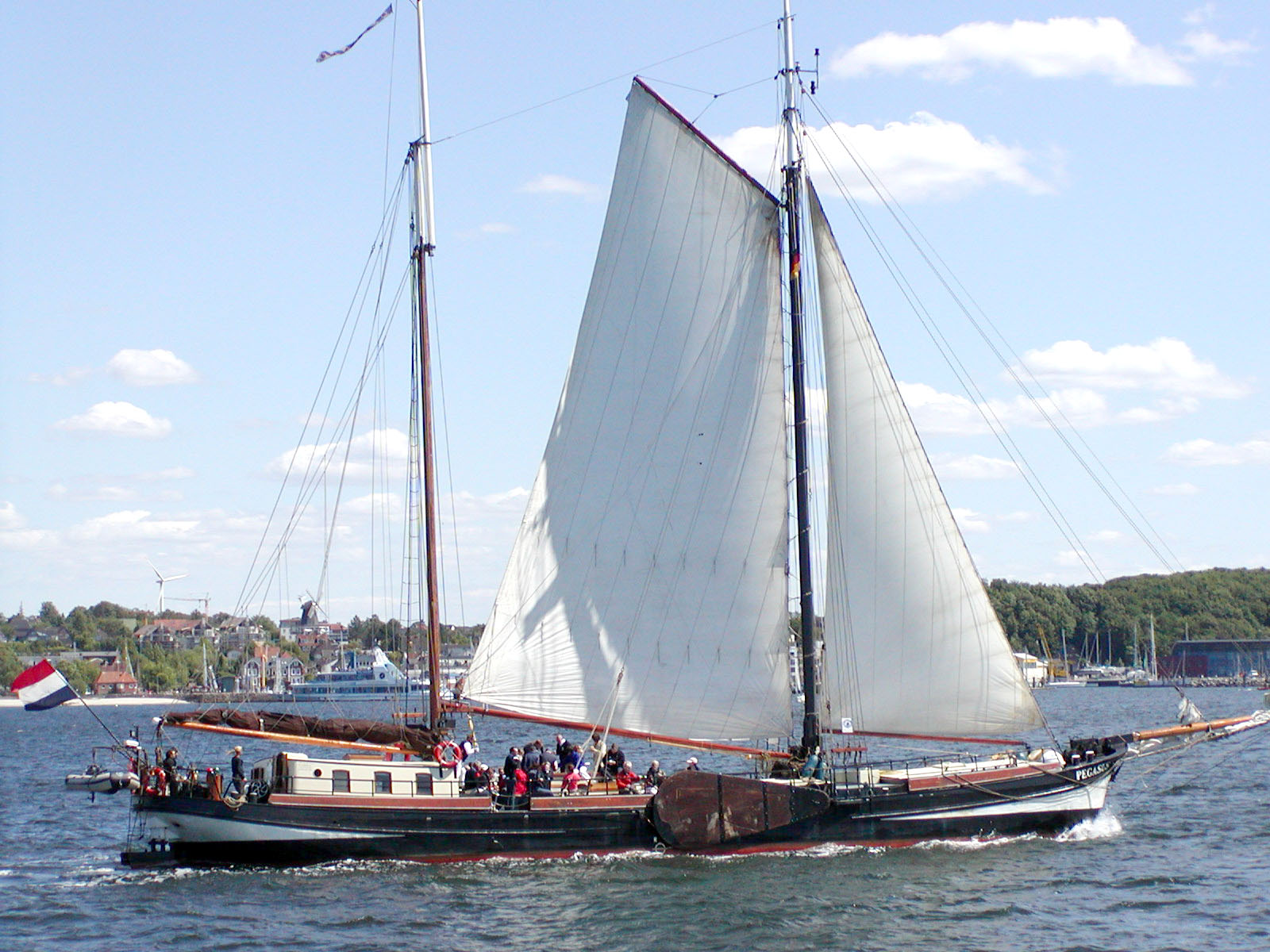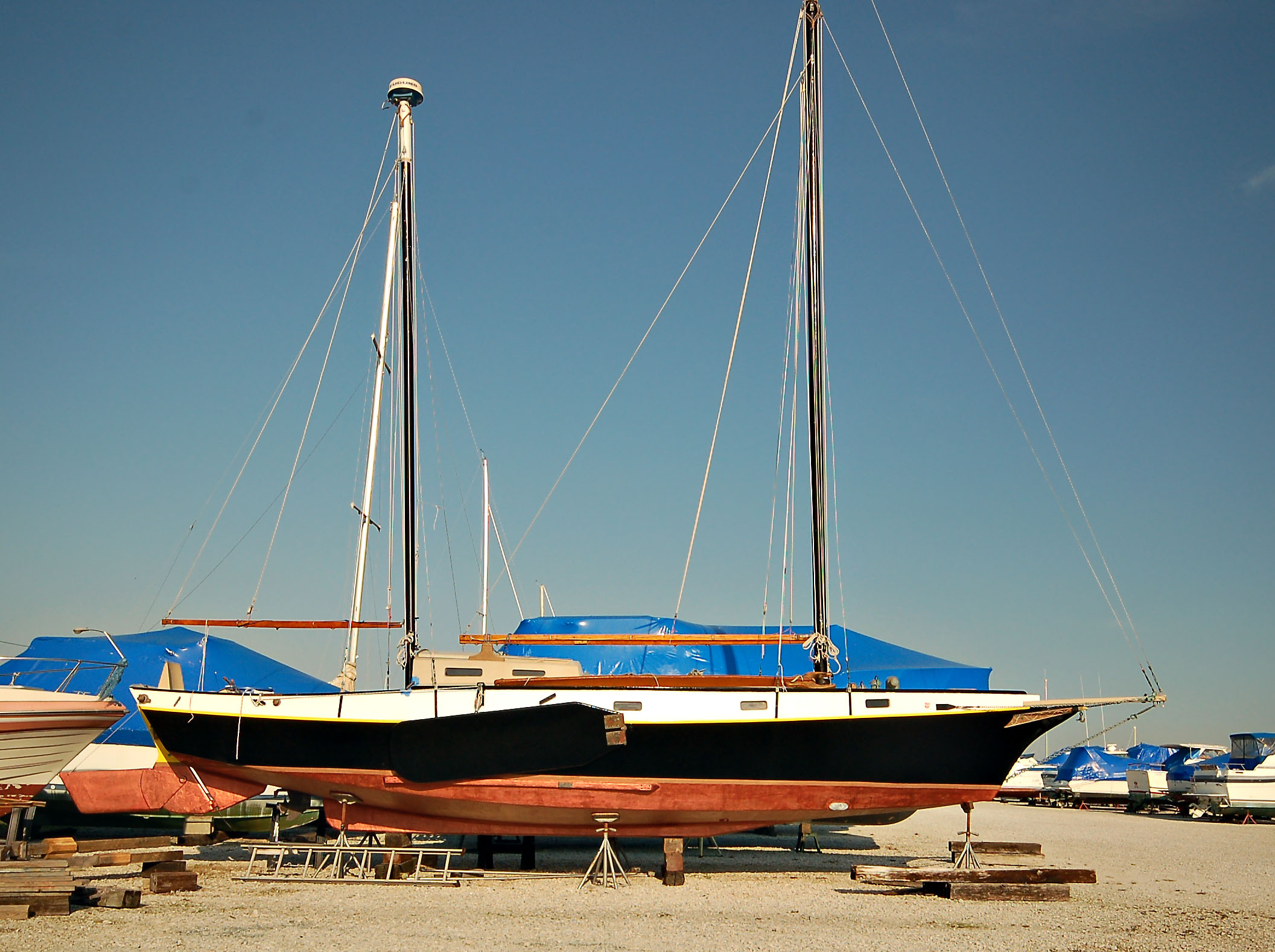Leeboard on:
[Wikipedia]
[Google]
[Amazon]


 A leeboard is a form of pivoting
A leeboard is a form of pivoting

 A leeboard is a form of pivoting
A leeboard is a form of pivoting keel
The keel is the bottom-most longitudinal structural element of a watercraft, important for stability. On some sailboats, it may have a fluid dynamics, hydrodynamic and counterbalancing purpose as well. The keel laying, laying of the keel is often ...
used largely by sailboat
A sailboat or sailing boat is a boat propelled partly or entirely by sails and is smaller than a sailing ship. Distinctions in what constitutes a sailing boat and ship vary by region and maritime culture.
Types
Although sailboat terminology ...
s, very often in lieu of a fixed keel. Typically mounted in pairs on each side of a hull, leeboards function much like a centreboard, allowing shallow-draft craft to ply waters inaccessible to fixed-keel boats.
Only the leeward
In geography and seamanship, windward () and leeward () are directions relative to the wind. Windward is ''upwind'' from the point of reference, i.e., towards the direction from which the wind is coming; leeward is ''downwind'' from the point o ...
side leeboard is used at any time, as it submerges when the boat heels under the force of the wind.
A disadvantage, where there is an inadequate fixed keel, is that leeboards typically ship (bear) little ballast, and being on the far ( lee) side delays the onset of unballasted craft's heeling, that is, inhibits the effect of putting up a good, constant resistance against the wind. The classical, archetypal definition of ballast is a low, central weight to optimise centre of mass, to reduce turning moment and therefore resistance to the boat keeling over; however, the centre of gravity tends to be higher in self-righting vessels. Modern developments allow leeboards to act as a speed-enhancing lifting foil
Foil may refer to:
Materials
* Foil (metal), a quite thin sheet of metal, usually manufactured with a rolling mill machine
* Metal leaf, a very thin sheet of decorative metal
* Aluminium foil, a type of wrapping for food
* Tin foil, metal foil ma ...
( hydrofoil).
History
Leeboards existed in China from at least the eighth century on warships that "held the ships, so that even when wind and wave arise in fury, they are neither driven sideways, nor overturn". Leeboards for stabilizing junks and improving their capability to sail upwind, are documented from a book by Li Chuan. The innovation was transmitted to Portuguese and Dutch ships around 1570. "The Portuguese experimented with caulking their vessels in the Chinese manner and the Dutch probably added leeboards to their craft that were copied from Chinese models." Leeboards have been used by relatively large inshore and coastal sailing vessels used for transport since 1570, such asDutch barge
A Dutch barge is a traditional flat-bottomed shoal-draught barge, originally used to carry cargo in the shallow '' Zuiderzee'' and the waterways of The Netherlands. There are many types of Dutch barge, with characteristics determined by regiona ...
s, Thames barges, and American gundalows. For these boats, leeboards provided the advantages of shallow draught for working close inshore and an unobstructed hold for cargo. In particular, they allowed gundalows to take the hard to load and unload cargo in unimproved tidal areas, as well as readily conduct maintenance on their hulls. Leeboards were also easier to build than a large centreboard would have been.
Today
Leeboards are no longer common in commercially-built boats, because many people consider them inelegant and awkward. They are far more common in home-built boats, especially the Puddle Duck Racer and stitch and glue type sailboats. Leeboards simplify construction of the hull, as they are attached to the outside and do not require holes in the hull, which can leak. Since centreboards are retractable, they require a large, watertight trunk to hold them in place when retracted, and this occupies what otherwise might be useful space in the cabin or cockpit of the boat. Use of leeboards, while it adds complexity to the process of tacking, leaves the floor of the boat unobstructed. According to traditional design principles, a boat utilizing a leeboard either needs to have two retractable leeboards, one on each side, or a method of removing the leeboard and attaching it to either side while under way, because nearly all sailboats tack to work their way upwind (with the exception of the proa). However, some small sailboat designers claim to have created seaworthy vessels with only a single, fixed leeboard. On a traditional two-leeboard (or non-fixed leeboard) design, the boards are designed so that thewindward
In geography and seamanship, windward () and leeward () are directions relative to the wind. Windward is ''upwind'' from the point of reference, i.e., towards the direction from which the wind is coming; leeward is ''downwind'' from the point ...
board can be retracted, to reduce drag. Unlike centreboards, which are symmetric along the boat's axis, leeboards are often asymmetric, so that they more efficiently provide lift in one direction. Some fast racing scows use bilgeboards, which are mounted between the centreline of the hull and the sides, so they can use a pair of asymmetric foils for maximum lift and minimum drag.
See also
* Bruce foilNotes
References
External links
{{Sailing ship elements, state=expanded Chinese inventions Sailing rigs and rigging Sailing ship components